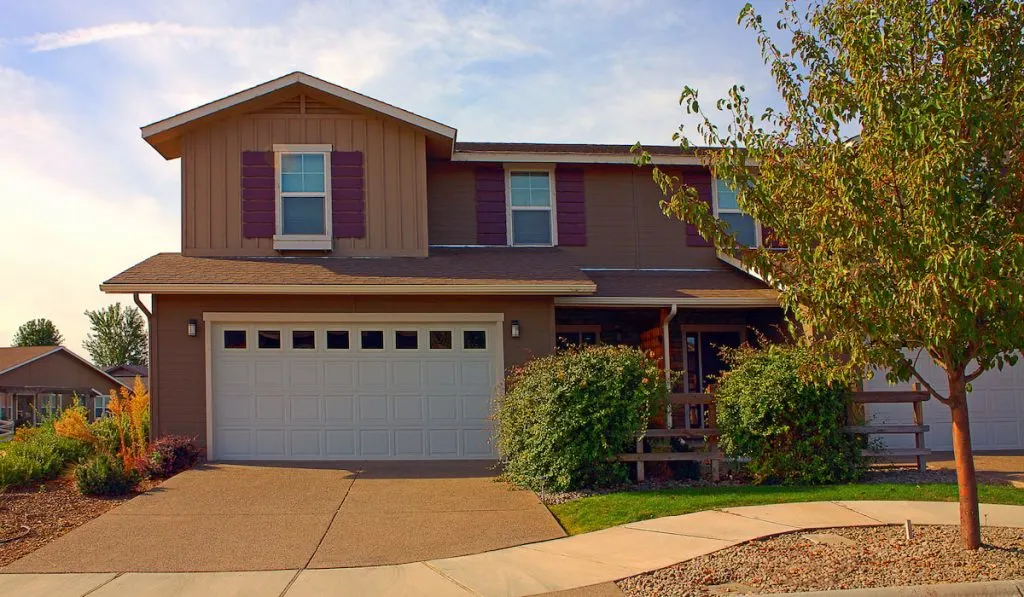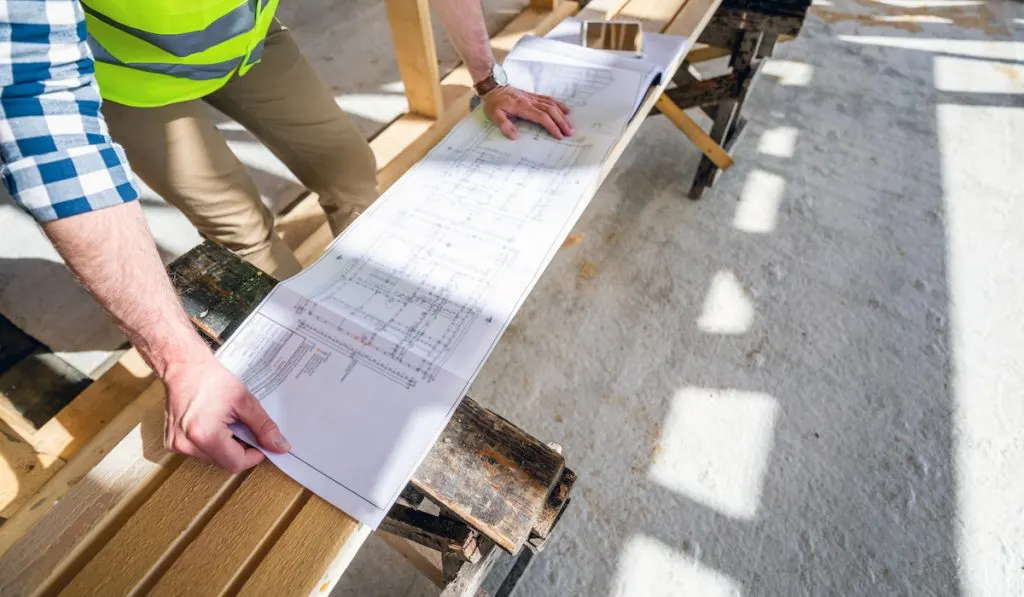When calculating square footage, various parts of a house, like the rooms and kitchen, are considered. But does the garage count?
Garages do not count towards the square footage of a house. During the appraisal of the square footage of a house, the unfinished spaces – interior spaces without heating & cooling – do not count. Since the garage fits into this description, it does not make up the square footage of a house.
You probably have many other questions about the garage, square footage of a house, and more. Well, you are in luck because, in the rest of this post, we explore the topic adeptly. Read and enjoy.

Do Garages Count In Square Footage?
One might think, “the garage is connected to the house, so it should count in the square footage.” However, this thought is not accurate.
In general, when determining the square footage of a house, only the living/livable areas are considered.
Living areas refer to the parts of the house with heating and cooling. The living areas must also have flooring, ceiling, and wall covering.
Garages typically do not come with heating and cooling. Hence, they do not count in the square footage of a house.
You may choose to calculate the square footage of your garage. However, it should be listed separately from the square footage of the living spaces (gross living area – GLA).
What Factors Determine What Counts in Square Footage?
Besides being a living space, other factors determine what counts in square footage. One of these factors is the ceiling height.
The ceiling height does not count in the calculation of the square footage of a house. However, it plays a role in determining which rooms count in the square footage.
According to ANSI, in a room with a level ceiling, the ceiling height must be 7 feet to be part of the square footage.
If with beams or other hanging fittings, the ceiling height should be at least 6 feet 4 inches from the beam/hanging fitting.
However, if the ceiling is angled, then the ceiling height should be 7 feet for no less than half of the room’s floor area.
If this is met, the floor areas of the same room with at least a 5-feet ceiling height should count too. Those below 5 feet will not count.
Any space that does not meet these ceiling height requirements will not count in square footage.
Besides ceiling height, any space below the ground level does not count in the calculation of the GLA. So, basements, even when finished, do not count.
Still, the square footage of the basement can be listed separately as ‘below grade.’ Below grade means below ground level.

In the past, basements were included in the calculation of the square footage if they had windows. But ANSI’s quest for a collective standard changed that.
Apart from that, any space that cannot be accessed directly from the main building does not count.
Generally, if you must leave the finished area of the main building to get to that space, it should not be part of the square footage.
So, even if it shares a wall with the central building, it will not be part of the square footage. If you can only get to the finished space with a ladder, it does not count.
What Is ANSI?
ANSI is an acronym for American National Standards Institute.
It is a non-profit organization that handles the development of and conformation to standards in the United States.
ANSI is a private organization, and conformation to its standards is voluntary.
So, while the ANSI standard for square footage is common, it is not used by everyone. For one, it may or may not be used in calculating the square footage of a condominium.
It may also not be used for single-family residences. So, you may find some subjectivity in the calculation of the square footage of a home.
In a way, calculating the square footage requires some artistry. So, if you are unsure of how things should go, let a professional handle it for you.
Why Does Square Footage Matter?
Most times, when looking to buy a house, people pay more attention to the available amenities. They focus on things like the outdoor space, the extra features, and the neighborhood.
But there is one vital quality people should also pay attention to – the square footage of the house.
Why is square footage important? Well, the square footage of a house might come in handy when you are listing it for sale.
For one, some listing sites require that you state the exact square footage of the property you are putting up for sale.

Some states also require that you reveal the square footage information when putting a house up for sale.
Besides, it can be of use when determining the valuation of the house at the time of listing.
You must avoid falsifying or distorting the actual square footage of your house. If you do, you may be legally responsible and sued for damages.
Square footage of a house offers a hint of house livable it can be for you. When you consider your lifestyle, the size of your family, and your family’s lifestyle, the square footage can help you select a fitting space.
Also, when you are on a budget, the square footage can guide your decision in choosing a place that fits just right. You do not have to exhaust your budget on an excessively spacious house.
At the same time, you should not get a smaller-than-ideal home with expensive finishes.
Instead, discuss with your realtor and let them know your budget. The realtor will let you know your options – the type and size of the home that would suit your factors.
If you are thinking of potential utility costs – heating & cooling – the square footage can also guide you.
You may those who already live in that area, and with their utility cost and square footage, you should be able to estimate yours.
What Counts in the Square Footage of a House?
The following are the areas that typically count in the square footage of a house:
- Kitchen
- Dining Room
- Living Room
- Family Room
- Bedroom
- Bathroom
Besides the above, the following may also count:
- The attic may count if it is finished and can be accessed directly from the main living area.
- A porch may count if it is enclosed and uses heating & cooling from the main living area.

What Does Not Count In the Square Footage of a House?
Some of the areas that do not count in the square footage of a house include the following:
- Garage
- Basement
- Pool house (when it cannot be accessed directly from the main living area)
- Guesthouse (when it cannot be accessed directly from the main living area)
- Attic (if you can only get to it with a ladder)
- Detached storage areas
Final Thoughts
Only living areas count in the calculation of the square footage of a house. But since garages do not qualify as living areas, they do not count.
In many cases, the ANSI guideline is used in calculating the square footage of a house. But this is not always the case. Besides, the guidelines vary from state to state.
So, if you are unsure of how to calculate square footage, get a professional. Remember, if you misrepresent the square footage of your house, you may be sued for damages.
Resources
- https://www.raleighrealtyhomes.com/blog/measure-square-footage.html
- https://home.howstuffworks.com/home-improvement/remodeling/measure-square-footage3.htm
- https://www.zillow.com/blog/how-to-measure-your-homes-square-footage-92175/
- https://www.realestateabc.com/answers/squarefoot.html
- https://www.gulfwinds.com/blog/Ceiling+Height+Consideration+When+Calculating+Living+Area+Square+Footage+In+A+Home
- http://www.workingre.com/measuring-understanding-ansi-standards/
- https://www.mymove.com/moving/guides/square-footage-matters/
